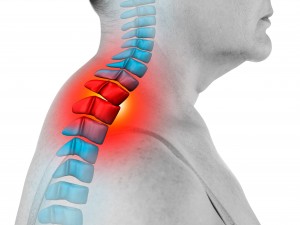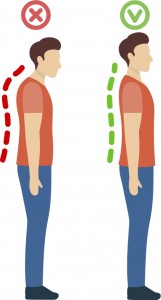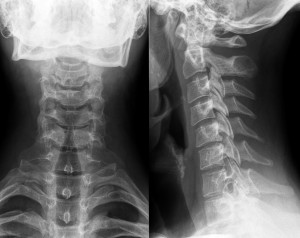
Dowagers Hump
Have you ever noticed a hump at the base of your neck? It’s one of the common changes I see as a result of curve changes to the neck and upper mid back area. It is called a dowager’s hump or kyphosis. The body lays down more fatty tissue at the base of the neck due to the structural changes occurring in the spine and it creates an increased load at the base of the neck and across the shoulders. You may feel this as:
- Increased heaviness, tightness or tension across your shoulders
- You may experience headaches or migraines
- Mid back pain or discomfort between the shoulder blades
- Or you may not notice any symptoms at all, but just see more the aesthetic change of the hump.

Postural Change
From another aesthetic and postural perspective, we tend to note that the head comes forward over the shoulders from a side view and there is often a compensation of rounding through the shoulders to adapt to the changes in the neck. This often happens BEFORE the hump develops. The hump is a result of an altered and increased load through the spine as a result of these postural and structural changes. The downside of the head moving forward over the body? Gravity is a constant force and once it goes forward, it’s gradually keeps going that way unless you do something about it. So the more the head projects forward, the more stress lands through that area and the larger the hump gets, it can become a cascading cycle. I see a lot of people whom come in for other reasons, but we either pick up a Dowager’s hump in their examination or they mention it when we go through their health history, often commenting that they hate that “bumpy bit on the back of their neck”. It used to occur primarily in the elderly. What I am finding in recent years is that it is now becoming more common in general. It’s also starting to happen in younger people, now as early as people in their 20’s! There also seems to be a greater tendency for occurrence in women. Can a Dowager’s Hump be improved? The reality with a Dowagers hump is that yes, it can potentially be improved, but to what extent will depend on how long it’s been there for and what structural and functional changes in your body are underlying it. Yes genetics can predispose you to it as well, but it will predominantly come back to the structure of your spine, which is predominantly attributed to your lifestyle. Everyone’s body is different, so it will depend individual to individual. I’ve found that a Dowager’s Hump generally won’t be resolved or improved by stretching/strengthening areas of the neck and mid back alone or any form of bracing, and that is because it is more to do with underlying spinal curve change. The muscle tightness associated is more a compensation to the underlying changes your body is making. We need to address the cause of the hump to begin with. What I have seen time and time again is the earlier you try to correct a Dowager’s hump, the better chance you have of improving it, lessening the hump and to also prevent it from getting worse.

Straight neck/ Reverse curve
So why do the spinal curves change? The body is very intelligent, when it does not have the correct movement that it should through the spine, the body adapts and will change the spinal curves to compensate to try to alleviate pressure or tension elsewhere. This can build up from lifestyle and different forms of stress in your body.
We look at and assess these adaptations upon examination, and often will confirm structural spinal changes via X-ray. From there we develop a treatment plan based on your x-rays and testing we have done to determine what is needed to reach your goals.
Are you ready to see if we can help with your neck hump?
Book in online for an initial assessment (first appointment) via this link:
